Periodontics
Periodontal diseases are diseases of tissues that surround teeth – gums and periodontium (ligaments and vessels that hold teeth in place) and alveolar bones. The primary cause of these diseases is plaque formation at the gingival line – if plaque is not removed every day during regular, correct tooth cleaning, it will cause gingivitis.
Gingivitis is a curable disease – correct treatment and proper oral hygiene guarantee the regression of symptoms.
Untreated gingivitis may develop into periodontal disease – the toxins produced by plaque bacteria cause gum destruction and, then, alveolar bone destruction. Teeth are no longer supported in the skull, get loose and fall out.
Periodontal disease development stages
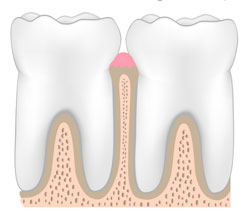 Healthy periodontium |
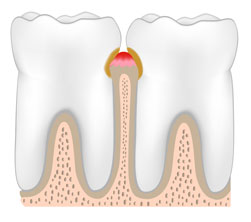 Gingivitis |
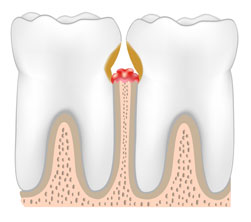 Gingival pocket |
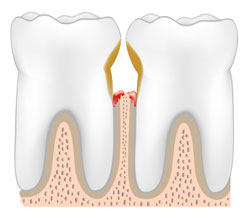 Periodontitis |
Controllable:
- bad oral hygiene,
- infrequent visits to the dentist’s,
- smoking,
- stress.
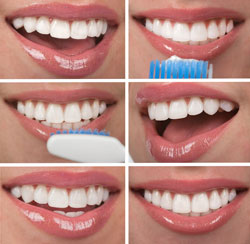
Uncontrollable:
- genetics (hereditary nature),
- sex,
- race,
- age.
Periodontal diseases are a very serious focus of inflammation for the whole body. Scientific research has proven that there is a close connection between advanced, untreated periodontal diseases and the occurrence of systemic diseases, bacterial endocarditis, non-specific enteritis, diabetes, cerebral stroke, ophthalmia, arthritis or premature labour.
Treatment of periodontal diseases
- Oral hygiene – plaque elimination entailing enforcing correct teeth cleaning methods in compliance with the doctor’s recommendations after proper teeth cleaning teaching, and regular prophylactic teeth cleaning at the dentist’s.
- Surgical tissue recreation methods – applied in advanced periodontal diseases, with the aim of recreating tissue with the use of the patient’s own bone, bone-substitution materials or membranes, so as to reinstate the function of the teeth and aesthetics.
- Conservative treatment as the beginning or continuation of surgical procedure.
Treatment of periodontal diseases is long and requires extensive engagement and cooperation on the side of the patient.

